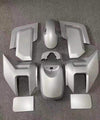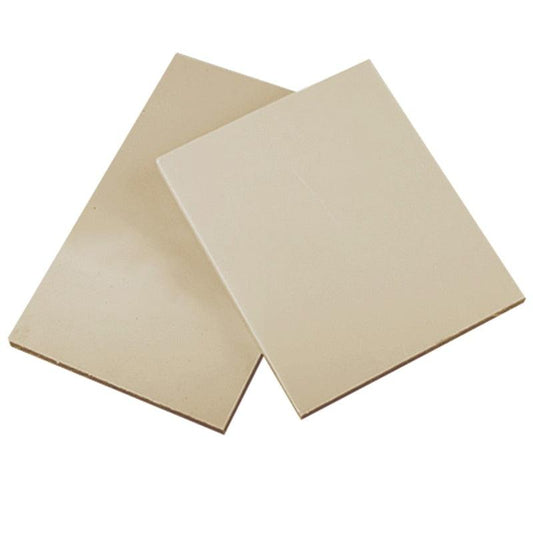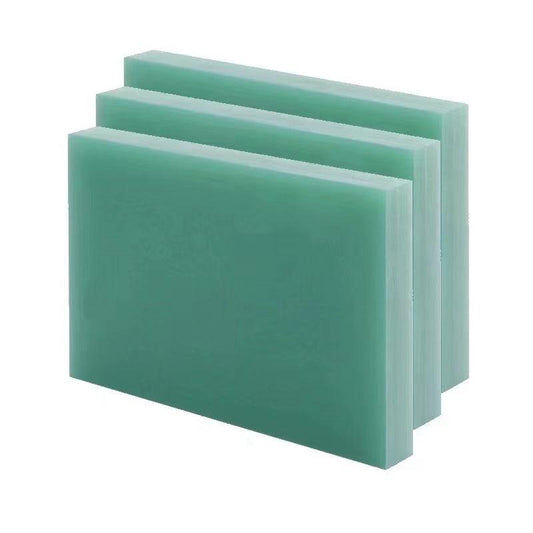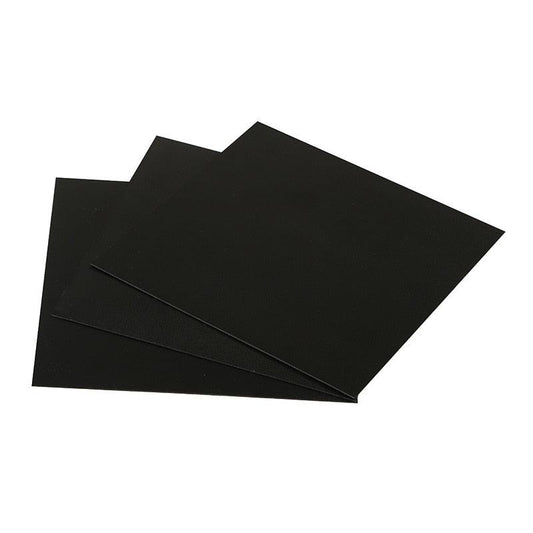POM plastic, also known as acetal plastic or polyoxymethylene (POM), is an engineering thermoplastic widely used in precision parts manufacturing. With excellent mechanical properties, POM plastic has diverse industrial and consumer applications that highlight its strength, stiffness, and stability.
🎉🎉🎉Limited Time Offer Use code: QR4GNY08SHVR at checkout and enjoy a special discount on your entire order! 👉 POM plastic
As technology progresses, POM plastic has become increasingly valued for custom machined parts and injection molded components across transportation, electronics, medical devices, and more. This article will explore what makes POM plastic such an important material for custom processing.

A Primer on POM Plastic Materials
What is POM Plastic?
POM plastic, or polyoxymethylene, is a high-performance engineering thermoplastic created by polymerizing formaldehyde. The POM plastic molecular structure consists of repeating formaldehyde units connected by an ether linkage.
It has high crystallinity, molecular weight, and densification that grant POM excellent mechanical properties alongside chemical resistance. These characteristics make POM a popular choice for food processing equipment, consumer appliances, automotive systems, and industrial machineries.
Key Characteristics of POM Plastic
POM plastic stands out for being:
- Extremely strong, stiff, and hard
- Dimensionally stable
- Naturally lubricious and low friction
- Resistant to fuels, solvents, and other chemicals
- Easy to fabricate using machining and injection molding
How Does POM Plastic Compare to Other Materials?
Compared to metals, POM plastic offers higher strength-to-weight ratios. Unlike nylons, POM has superior mechanical properties especially in wet environments. Against ABS and PVC, POM demonstrates better chemical and fatigue resistance.
This unique balance of strength, chemical inertia, and processability establishes POM as an extremely versatile engineering thermoplastic for custom applications.

The Properties That Enable POM Plastic’s High Performance
What makes POM plastic well-suited for critical components across industries? POM owes its versatile high performance to exceptional mechanical properties.
Key Material Properties of POM Plastic
POM plastic possesses the following key material properties:
- Tensile strength - 10,000 to 11,800 psi
- Flexural modulus – 300,000 to 450,000 psi
- Coefficient of friction – 0.25 to 0.35, low even without lubricants
- Water absorption – Negligible, around 0.25% max
- Operating temps – -40°F to 180°F (-40°C to 82°C)
These intrinsic physical characteristics already enable POM usage in demanding applications. On top of that, POM plastic offers excellent chemical resistance owing to its stable carbon-oxygen molecular linkages throughout the polymer chain.

The Durability and Strength of POM Plastic
The high crystallinity grants POM its excellent strength-to-weight ratios, allowing substantial load-bearing capacity in small, lightweight components. At the same time, POM plastic parts retain the stiffness and dimensional stability crucial for precision fittings and moving assemblies even under cyclic strains.
Furthermore, POM’s abrasion resistance prevents premature wear even on moving parts that undergo constant frictional contact. Coupled with its natural lubricity, POM plastic enables smooth movements and long service life.
The Environmental Impact and Recyclability of POM
POM plastics are not derived from BPA or phthalates, thus avoiding major health concerns linked to those substances that may leach out from plastic parts. Properly processed POM plastic is food-contact approved by the FDA.
At end-of-life, POM can be recycled back into new plastic products just like PET and HDPE. POM plastic's high value and ease of reprocessing make it economically attractive to regrind and remake into products.

Applications Benefiting from POM Plastic Parts
From tiny gears to huge structural components, POM offers engineers consistent performance meeting stringent requirements across applications.
POM Plastic in Manufacturing and Engineering
POM usage includes small precision parts that serve crucial functions:
- Gears – Excellent strength and lubricity
- Rollers – Low friction motion enablers
- Bushings and bearings – Wear resistance
- Clips, fasteners, handles – Snap-fitting capabilities

Larger structural POM plastic applications:
- Conveyor chains – Constant movement resistors
- Pulleys, cams, sprockets – Withstand cyclic stresses
- Figurines, replicas, prototypes – Ease of machining
POM Plastic Parts in Automotive and Electronics
In vehicles, POM components help optimize:
- Fuel systems – Fuel cap housings, impellers
- Steering and suspensions – Bushings, rollers
- Transmissions – Gears, shift fork pads
Consumer electronics depend on tiny POM plastic pieces guiding intricate mechanisms, like buttons, connectors, micro-switches, and more.
Industrial grade electronics encase sensitive innards in POM plastic housings that offer tough protection without interfering with signals.
POM Usage in Medical Devices and Consumer Goods
POM plastic possesses excellent bio-compatibility alongside machinability, allowing customized engineering of surgical tools, inhalers, orthodontic braces, pill casings, and other medical equipment where strength and precision matter.
For consumer applications, the FDA-approved food contact rating and high durability of POM enable usage in items such as:
- Kitchen tools like slicers, peelers, graters
- Lock mechanisms, buckles, and latches
- High-wear components of appliances

Custom Processing Techniques to Create POM Plastic Parts
Fabricating specialized POM components unlocked new potential in professional domains as diverse as aerospace and food processing. This section looks at producing custom POM parts.
The Benefits of Custom POM Plastic Parts
Machined POM stock allows engineers to create application-specific components with:
- Precise dimensional accuracy
- Intricate geometries impossible through injection molding
- Small batches usable for prototyping and R&D
- Shorter development cycles
Techniques for Machining and Fabricating POM
Common methods for machining fully dense POM plastic include:
- CNC milling to carve extremely intricate geometries
- Turning and boring to achieve cylindrically symmetrical precision parts
- Sawing and cutting using calibrated commercial equipment
Whereas custom fabrication of large POM sheets, rods, and blocks employs:
- Extruding molten POM through die heads
- Compression molding POM resin under high heat and pressure

Injection Molding Parts from POM Plastic
For mass production, injection molded POM components offer extreme consistency and cost efficiency compared to CNC machining. Complex parts with tiny features or tight tolerances on critical dimensions can be injection molded with POM to reliably deliver high performance.
The Cost Effectiveness and Versatility Driving POM Plastic Adoption
What truly elevates POM is the unparalleled versatility enabling widespread adoption despite its engineering polymer price point. This high-performance thermoplastic empowers custom applications across domains to enhance user utility at relatively low costs.
POM Plastic's Versatility in Diverse Applications
As explored throughout this article, POM allows excellent performance in areas that leverage:
- Predictable mechanical properties from polymer consistency
- Resistance to wear, abrasion, impacts, and harsh chemicals
- Capabilities for machining, fabricating, and injection molding
This versatility makes POM suitable for uses where failure risks range from mere annoyances to life-threatening situations.

The Cost Effectiveness of POM Plastic
POM plastic offers substantial value, owing to:
- Superb strength eliminating the need for metal parts in most cases
- Production scalability from prototypes to millions of identical pieces
- Part integration possibilities, consolidating assemblies
Customization Techniques Make POM Accessible
The machinability of POM plastic means:
- No need for custom molds in low-volume production
- Simpler systems by modifying off-the-shelf POM stock
- Short design and testing cycles
Thus complementing high-volume injection molding for applications with established designs.
POM Plastic - An Essential Material for Present and Future Technologies
POM’s unique balance of mechanical properties, chemical resistance, machinability, and economy establish this high-performance thermoplastic as an essential engineering material for innumerable current and emerging applications.
As technology progresses, POM plastic usage will likely continue rising to meet demands for ever more complex, smaller, and higher precision components across industries. The material lends itself equally well to large-part structural design prototyping as tiny integrated mechanisms requiring reliability.
With capabilities spanning customized fabrication from stock forms as well as injection molded mass production, Polyoxymethylene is undoubtedly an indispensable material now and for the applications of the future.

Frequently Asked Questions About POM Plastic
What makes POM plastic ideal for gears?
Gears require maintaining precise dimensions and tight tolerances to effectively transfer motion. POM plastic's stiffness, strength, hardness, and dimensional stability are vital for gears that encounter cyclic stresses through changing loads and directions while operating smoothly.
Why is POM plastic perfect for bearings and bushings?
Bearings and bushings greatly benefit from POM's natural lubricity coupled with resistance to abrasive wear. Under loads, POM plastic parts retain dimensional accuracy while minimizing particle generation that could contaminate systems. The excellent consistency of injection molded POM's properties take efficiency and service life to the next level.
How does POM plastic improve consumer appliances and products?
Many appliances and household items depend on small plastic components to drive mechanisms that would otherwise require metal pieces. POM offers high strength, low friction operation and long term structural integrity in the face of chemicals and humidity. Replacing metals with POM allows lighter products and far more design possibilities.
I aimed to create an informative, easy to follow guide explaining POM plastic's significance in custom processing applications for industrial and consumer products. Please let me know if you would like me to modify or improve any part of this article further. I can also add more sections or content if needed.

🎉🎉🎉Limited Time Offer Use code: QR4GNY08SHVR at checkout and enjoy a special discount on your entire order! 👉 POM plastic






